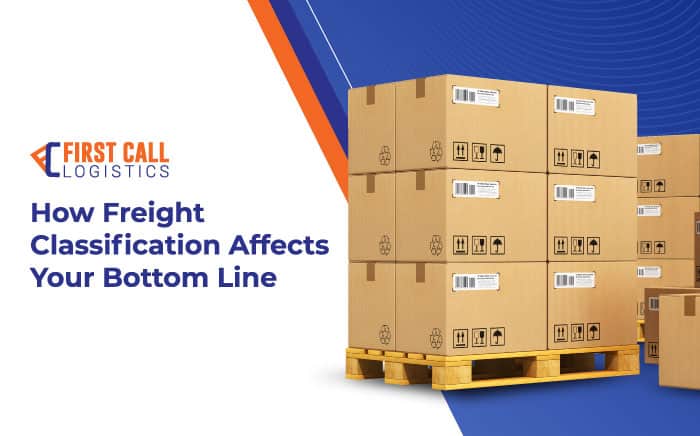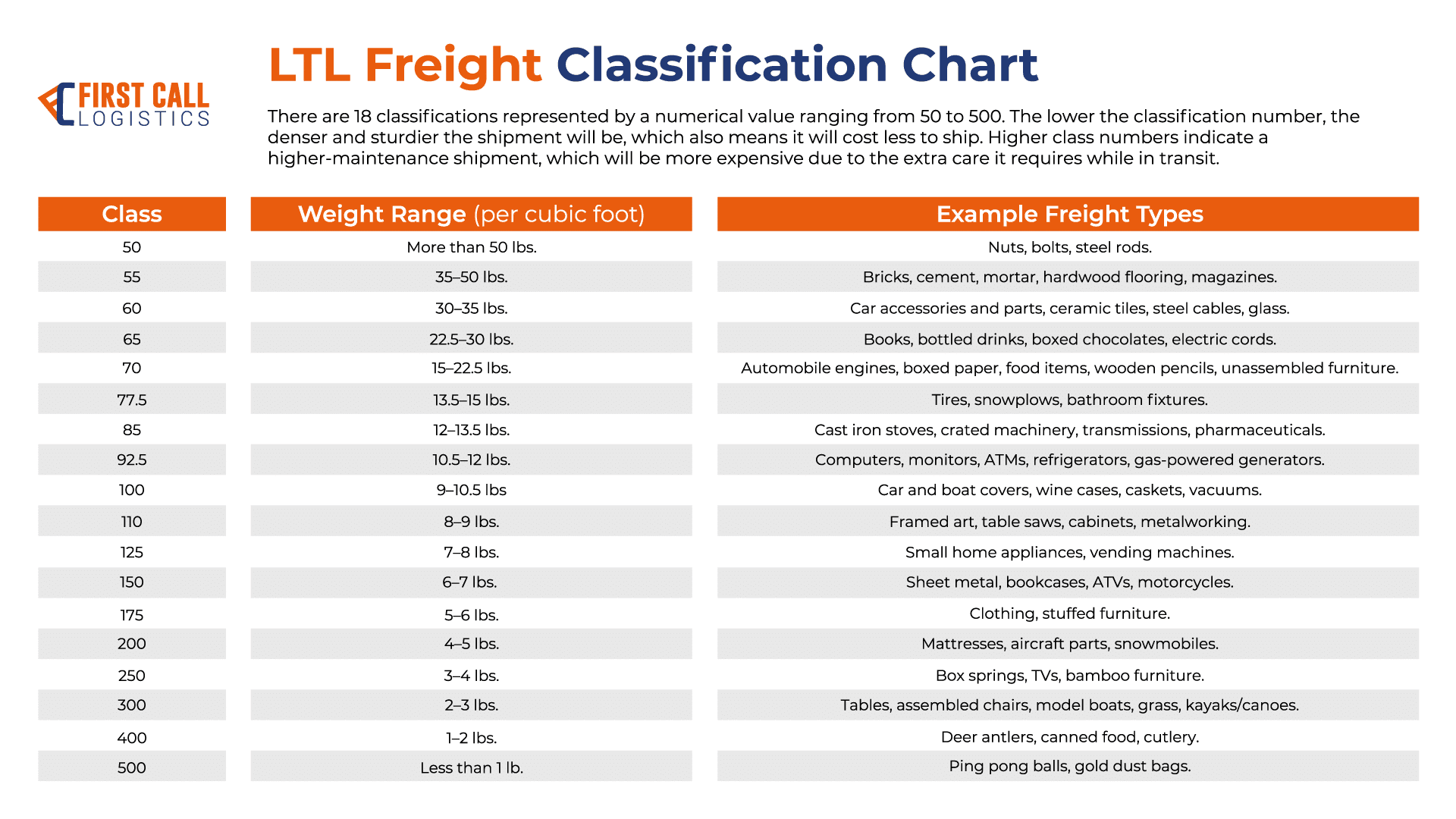How Freight Classification Affects Your Bottom Line

As an industry, supply chain logistics has experienced a renewed emphasis on optimal shipping solutions in recent years, with many shippers experimenting with less-than-truckload (LTL) shipping models to limit the unnecessary use of resources like storage space, carrier capacity and fuel.
While LTL shipping does offer an efficient solution to undersized shipments, some businesses overlook the matter of freight classification and its impact on shipping costs.
What is a Freight Class?
Carriers negotiate rates based on more than just a shipment’s base dimensions. True, some pallets are heavy and densely packed while others are lightweight and even fragile — but there are several additional variables to consider before taking on a shipment. Frequently, shipments require additional handling instructions or even special endorsements to legally store, transport and unload cargo.
That’s where freight classes come in. Developed by the National Motor Freight Traffic Association, a freight classification is used to group together LTL shipments with similar levels of transportability and liability. Since each group or class includes a variety of products, an NMFC code is assigned to further specify the type of item being shipped. Freight classes create a standard for comparison that can be used by both shippers and carriers in rate negotiations and logistical planning.
Assigning the correct freight class is essential to receiving accurate quotes for shipping rates, and for helping carriers effectively plan their outgoing shipments. In fact, freight class is so important that it’s required on the bill of lading, and many carriers will perform regular inspections to confirm each pallet is assigned its correct freight classification. If shippers list the wrong freight class, they’ll be charged additional fees for the reclassification efforts performed by the carrier and their shipments could be delayed.
How to Calculate Freight Class
To determine how to properly classify and code freight, four primary metrics are considered:
- Density – compares a shipment’s weight to the amount of space it takes up.
- Ease of Handling – takes into account irregularities in shape, fragility, if it’s potentially hazardous, and other factors that may indicate the shipment will require special attention during loading and unloading.
- Liability – analyzes the risk of theft or damage occurring while in transit.
- Stowability – reviews any regulations that may prohibit the shipment from being loaded with other types of freight.
Freight class is determined primarily based on the density of the shipment, while the NMFC code takes these metrics into account in equal measure. Some types of freight have such significant liability, handling or stowing complications they’ve been permanently assigned to a specific class. These are known as “fixed-class” items, as they are assigned the same class regardless of their size, weight, or packaging.
To determine a shipment’s freight class, start by calculating the density of the shipment:
- Find the length (L), width (W), and height (H) of the shipment in inches.
- Multiply L x W x H to find the size of your freight in cubic inches.
- Divide the cubic inches by 1,728 to convert your answer to cubic feet.
- Finally, divide the total weight in pounds by cubic feet. This will give you your freight density per cubic foot.
Once you know your freight density, you can quickly review a classifications chart to see which freight class your shipment falls into.
LTL Freight Classification Chart
There are 18 classifications represented by a numerical value ranging from 50 to 500. The lower the classification number, the denser and sturdier the shipment will be, which also means it will cost less to ship. Higher class numbers indicate a higher-maintenance shipment, which will be more expensive due to the extra care it requires while in transit.
Get Freight Classification Help from a 3PL
Determining the correct freight class can be tricky, especially for newer companies that aren’t as familiar with the classification system. Fortunately, you can ask for help from a trusted 3PL partner like First Call Logistics.
3PLs deal with freight classifications daily, which means they can determine the proper freight class and NMFC codes for each shipment quickly, they can also give tips for lowering a shipment’s freight class and thus cut down on costs.
Learn more about First Call’s freight shipping services and how we can help you avoid unnecessary classification fees.
Simplify Your Next Shipment with First Call Logistics
Building and managing cost-efficient supply chains is a full-time job. First Call’s rare combination of in-house assets, expert problem-solving and track record of stellar customer service makes us the 3PL of choice for business partners with a wide range of shipping needs.
More Logistics Resources:
Get the latest supply chain news and updates directly to your inbox.
